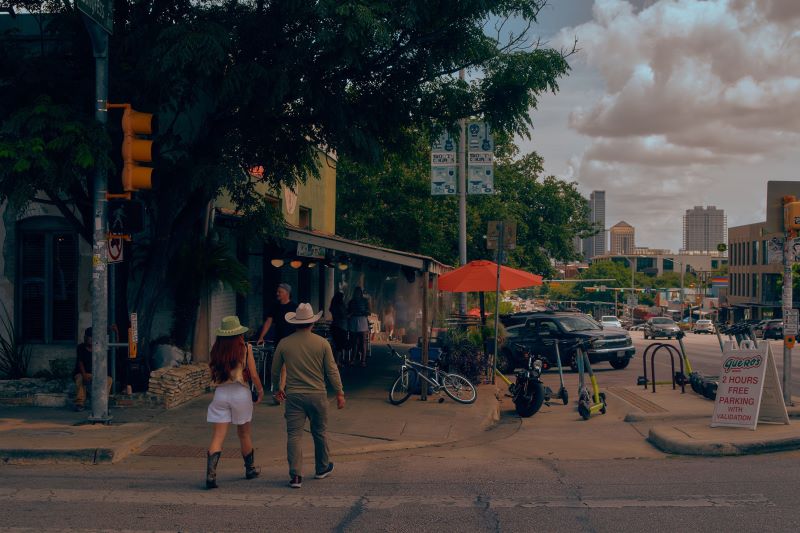Once hailed as the epitome of the pandemic-induced housing market, Austin, Texas. Now finds itself at the forefront of a national property cooldown. The city, which symbolized rapid growth and soaring real estate prices, is now grappling with a sharp reversal of fortunes. Home prices and apartment rents in Austin have plummeted more drastically than anywhere else in the United States. This signals a dramatic shift from its previous position as a real estate hotspot.
Austin’s Meteoric Ascent
In the not-so-distant past, Austin was synonymous with a booming real estate market. Fueled by an influx of remote workers and major corporate relocations, the city experienced unprecedented growth. Tech giants like Tesla and Oracle established offices in Austin, drawn by favorable tax environments and business regulations. The economy surged, outpacing the national average, and Austin ascended to become the country’s 10th largest city. The housing market responded accordingly, with prices soaring by over 60% from 2020 to the spring of 2022.
Oversupply and Economic Realignment
However, the tide swiftly turned for Austin’s real estate sector. A period of overbuilding coupled with a slowdown in job and population growth. This precipitated a rapid decline in home prices and apartment rents. Luxury apartment buildings now sit empty, as landlords resort to offering concessions to attract tenants. Single-family homes are being sold at a loss. Downtown office space remains vacant, with even major companies like Google delaying occupancy of newly constructed buildings.
Migration Patterns and Softening Markets
According to Barron’s report, Austin’s reversal is not an isolated incident but reflects broader trends in the housing market. Other Sunbelt cities like Phoenix and Nashville, which experienced similar population surges, are now facing similar challenges of overbuilding and declining affordability. The pandemic-induced migration patterns that once fueled these cities’ growth are now fading, leading to a softening of housing markets across the region.
Unsustainability and Overvaluation
Economists warn that Austin’s housing market remains fundamentally overvalued, despite recent price declines. The disparity between home prices and underlying economic indicators signals an unsustainable situation. While Austin’s per capita income rose, home prices skyrocketed at a disproportionate rate, leading to record levels of unaffordability.
Renters and Home Buyers Adapt
In response to shifting market conditions, renters and home buyers in Austin are adjusting their strategies. Some renters, like Thomas Young, are taking advantage of reduced rental prices in downtown apartment towers. Others, like Scott Collins, are biding their time, waiting for further declines in home prices before reentering the market.
The Road Ahead for Austin’s Housing Market
As Austin grapples with the fallout from its housing boom, questions loom about the city’s future trajectory. While migration patterns may be shifting and housing affordability remains a concern. Experts believe that Austin still retains potential for growth, particularly in its suburban areas. However, the road ahead may be marked by challenges. As the city navigates a period of economic realignment and recalibration in its housing market.
Acquire a 2-year subscription to The Wall Street Journal: Enjoy daily delivery six days a week and access WSJ Digital. Stay fully informed about finance, politics, healthcare, and global events with this comprehensive package. Dive into expert insights and trustworthy evaluations to broaden your perspective. To purchase a subscription, call WSJ Cell Phone: (800) 581-3716

